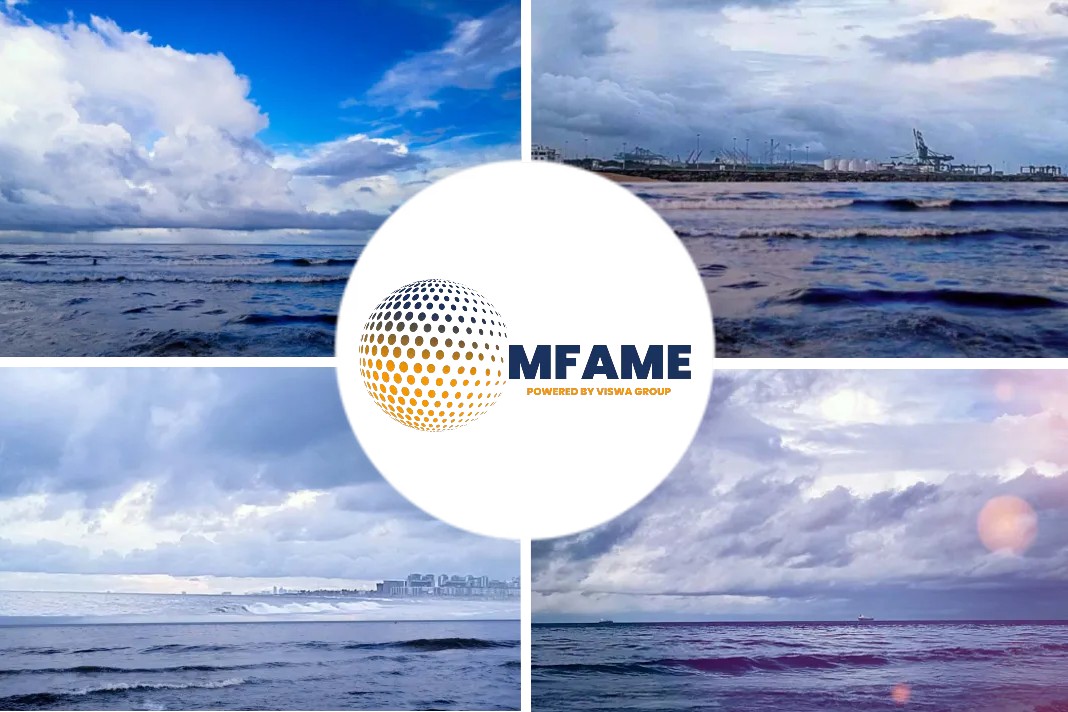Director of Wärtsilä Exhaust Treatment Sigurd Jenssen, in a press release, wrestles with the question of how to scale land-based tech for use at sea and believes scrubbers are not going to disappear any time soon.
Exhaust treatment to reduce emissions
Despite widespread work to power ships using green non-fossil fuels, the Finnish group’s director said he is busy developing future uses for the systems.
He doubts there is one single solution to decarbonisation and believes exhaust treatment is one of the best ways the industry can reduce emissions immediately.
Jenssen said that scrubbers’ current function as SOx reduction equipment is just the first step on their emissions abatement journey.
Wärtsilä has been focused on this application, “but at some point in time we realised we need to keep developing and refining the offering“, he said.
“So we’re looking at ways of increasing the particulate matter capture, either in scrubbers or with add-on equipment,” Jenssen added.
He also views NOx reduction using exhaust gas recirculation, or EGR, as a very cost-efficient way of reaching compliance with the International Maritime Organization’s Tier III emissions rules, as long as SOx and particulate matters are removed first.
Wärtsilä announced earlier this year that it was working on using its scrubbers to capture carbon aboard ships. “We’ve been very busy for the last two years — a little bit delayed because of Covid,” Jenssen said.
Lab trials coming up
This will be in a lab, however, not on a ship. “We need to understand the intricacies of a carbon capture plant and how we can leverage the trade-offs you would have to make on a ship,” Jenssen explained.
“Land-based carbon capture plants are huge. We have some thoughts on how we can shrink it to a manageable size.”
Land plants do not have the same restrictions as ships do. They can have a 30-metre-high tower, Jenssen said.
“Hence they haven’t put a lot of focus on shrinking it,” he said.
“We have built up a lot of experience with SOx scrubbing. We see we can take some of the learnings and experiences we have there to make the carbon capture tower much smaller than what you have on land — so similar to a SOx scrubber in size.”
The director said carbon capture “will take us a few years” to be at the level where the group can put something on a ship.
The timeline is three to five years, he revealed.
What comes after capture?
Once the carbon has been grabbed, there are two options, according to Jenssen.
- One is to reinject it into offshore or old oil wells, which is being done today in the Norwegian and Dutch sectors of the North Sea.
- The other is to use it to make synthetic fuels.
A lot of oil companies and others are looking into this, Jenssen said. The technology will need to have a “certain level of robustness and reliability“, he added.
“You can’t just pick up the phone and call a guy to come and fix it if you’re in the middle in the Atlantic,” Jenssen said.
As for the future of scrubbers in the long-term, the director said no one really knows where shipping will end up in terms of green fuels.
There will be abatement requirements with alternative bunkers as well, he believes. “That may be something that can be addressed with scrubbers.”
But that is still a long way off. With as many as 80,000 cargoships out there, “you can’t just scrap all of them and build new ones tomorrow”, Jenssen said.
20 or 30-year lifespan?
“If you build a ship today it will continue to sail for 20 maybe 30 years,” he added.
Interest in scrubbers for newbuildings remains, although retrofitting has been slower since the first wave of work ahead of IMO 2020 last year.
“I’m not sure we will ever see the same as the first wave,” Jensen said. “We see the fuel spread has been steadily climbing and that is resulting in growing in interest for sure in scrubbers.”
Wartsila is seeing more concrete discussion for retrofitting and this is expected to increase as societies open up post-pandemic, with travel again an option and demand for jet fuel rebounding.
“There is still a lot of potential there,” Jenssen concluded.
Did you subscribe to our daily newsletter?
It’s Free! Click here to Subscribe!
Source: Wärtsilä























